Lavaflow 7 by Craig Steely
A huge concrete beam appears to balance on its edge along the roof of this Hawaiian house by Californian architect Craig Steely (+ slideshow).
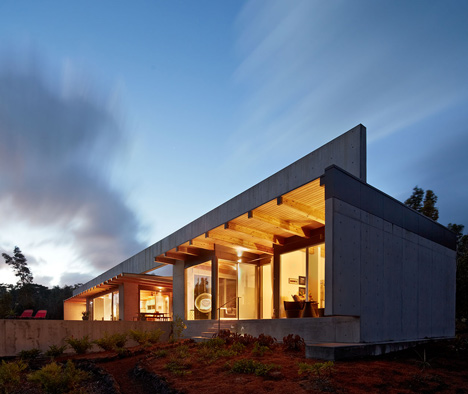
Constructed on the lava slopes of Hawaii's most active volcano, the concrete house by Craig Steely is divided into two halves, connected by a long concrete beam that soars overhead.
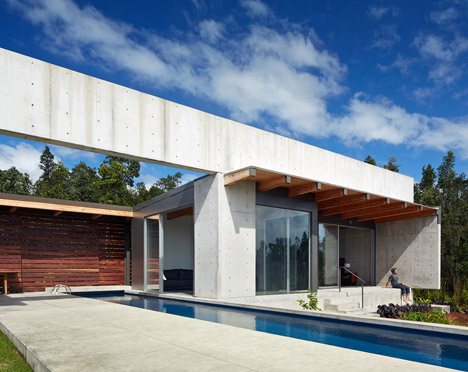
Timber beams and battons make up the roof, which runs beneath the concrete beam.
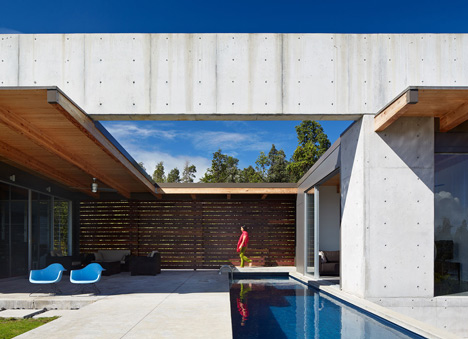
The living areas and master bedroom are separated from two further bedrooms by a lap pool and a veranda, which is partially covered by the overhanging roof.
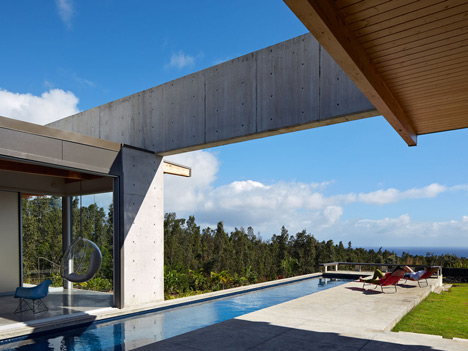
Floor-to-ceiling glass runs the length of one facade, allowing uninterrupted views into the surrounding Ohia forest and out to the ocean beyond.
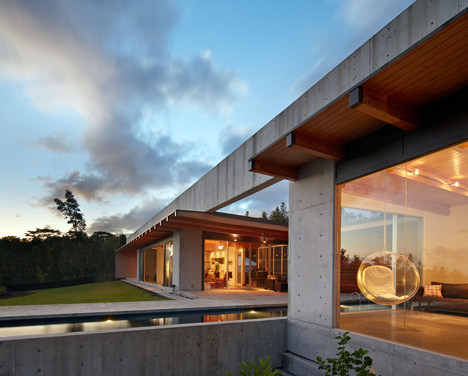
The architect was influenced by the native vegetation when designing the house. "The Ohia's brilliant red flowers, called the Lehua, are a striking contrast to the ruddy green leaves and shades of gray of the tree's bark and the black lava" says Steely. "Like the Ohia, the gray concrete house blends into the existing landscape of lava and trees while splashes of colour in the house mimic the Lehua."
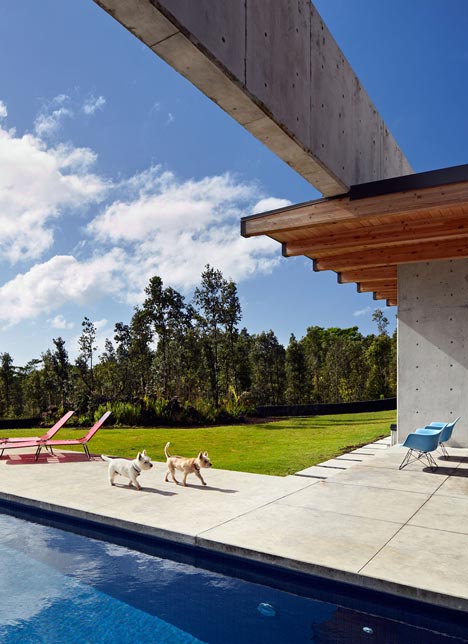
The house is deliberately long and narrow so as to increase cross-ventilation, eliminating the need for the mechanical air conditioning.
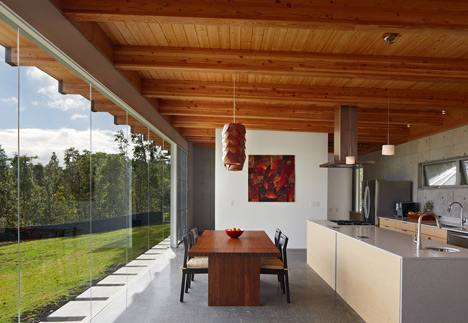
The building incorporates a rainwater catchment system, which provides the house with cold water as well as a solar heating system for hot water.
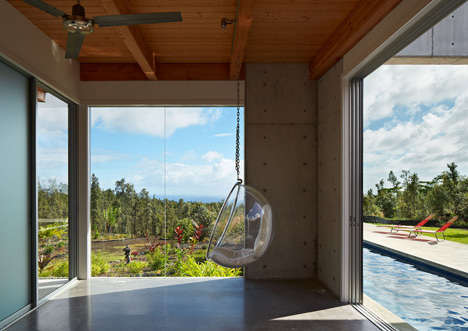
Named Lavaflow 7, the house is the latest addition to a series of residences by Steely, all of which have been constructed on the rocky slopes of Hawaii.
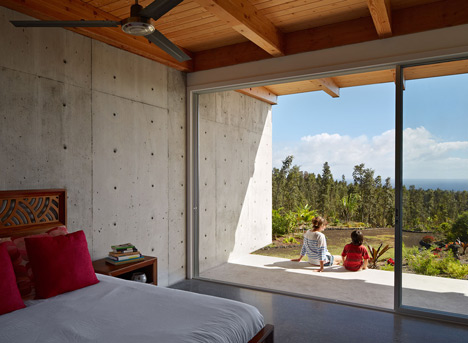
Other concrete dwellings we've recently featured on Dezeen include a house composed of a cluster of concrete cubes, stacked up on a steep hillside and a rural house raised off the hillside on a pair of gigantic concrete columns.
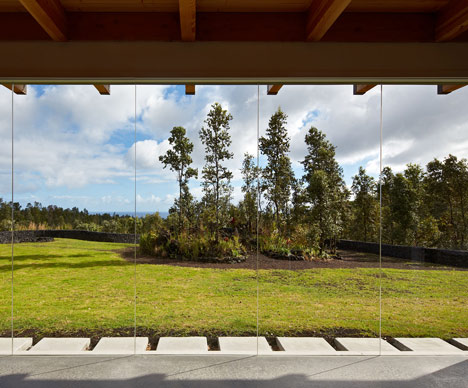
See more stories about concrete design »
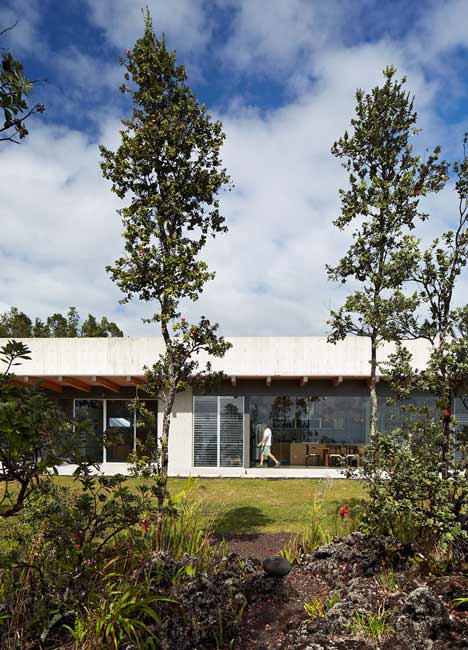
Here's some more information from Craig Steely:
Located on five acres of dense Ohia forest, this cast-in-place concrete house frames indoor and outdoor living spaces along with views of the forest, the sky, and the coastline on Hawaii's Big Island. It continues our exploration of a reductive architecture that enhances the experience of living in this compelling environment.
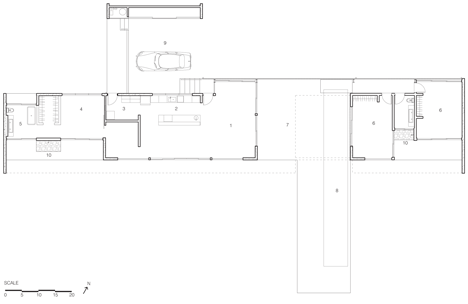
The main feature of the house is a concrete beam, 140 foot long, 48 inch tall x 12 inch wide running the length of the building with only three short concrete walls supporting it along its massive span. Laminated beams and wood planks make up the roof that hangs below it. The concrete beam allows for sizable spans of uninterrupted glass and covered outdoor space, which creates a permeable edge between the man-made and nature. These huge expanses of openness amplify the sensation of living in the Ohia forest.
Ohia trees are endemic to Hawaii. They are the first trees to grow on new lava flows. Lavaflow 7 sits on a 1955 lava flow on the slopes of Kilauea crater. The Ohia's brilliant red flower, called the Lehua, are a striking contrast to the ruddy green leaves and shades of gray of the tree's bark and the black lava. Like the Ohia, the gray concrete house blends into the existing landscape of lava and trees while splashes of color in the house mimic the Lehua.
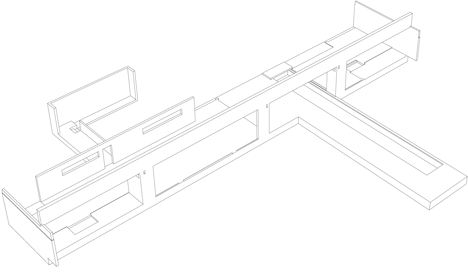
The nature of the house is long and thin, with private and public areas divided by a lanai and bisected by a lap pool. The thinness of the house provides passive cooling through cross ventilation allowing for the elimination of mechanical air conditioning, consistent and diffused light quality in the rooms through out the day, and a view of the forest, sky, and ocean from every room. Other sustainable features include a rainwater catchment system that supplies all water used along with a solar heating system for domestic hot water. A loose distribution of spaces around the few solid walls creates a house that is equally open in all directions and welcomes nature in.